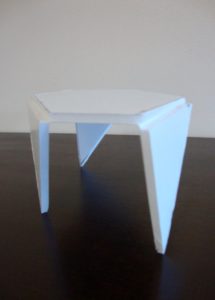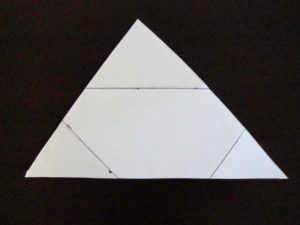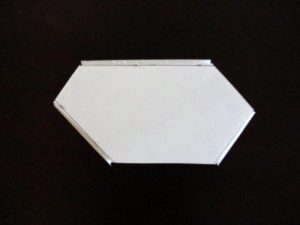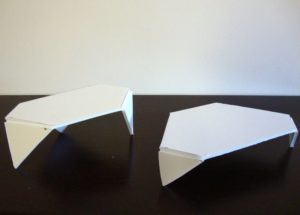 I was inspired to have some more fun with folding by a question from this year’s American Invitational Mathematics Examination (AIME) that turned triangles into tables and asked “How high can the table go?”. (You can find the question here).
I was inspired to have some more fun with folding by a question from this year’s American Invitational Mathematics Examination (AIME) that turned triangles into tables and asked “How high can the table go?”. (You can find the question here).
Investigating the problem seemed like more fun than solving it, so I cut out a triangle from some foam board and scored lines near the vertices.
Then I folded the corners and made the following table with an irregular hexagonal top!
I made a few, to see what kinds of heights I could get.
There are so many fun questions to explore here! What comes to mind?
Related Posts






